
Any trip to Almería should be one without preconceived ideas because Almería is not only desert, but much more. Nature has created splendid works here. Land of wilderness interspersed with water; a blazing sun with pockets of oases. And it is a place where in the recesses of its whitewashed villages a fascinating history is hidden. There is so much to do in Almería that a short stay is not enough to soak up all its beauty. Here is only a small appetiser of what one can enjoy on short getaways from its capital city.
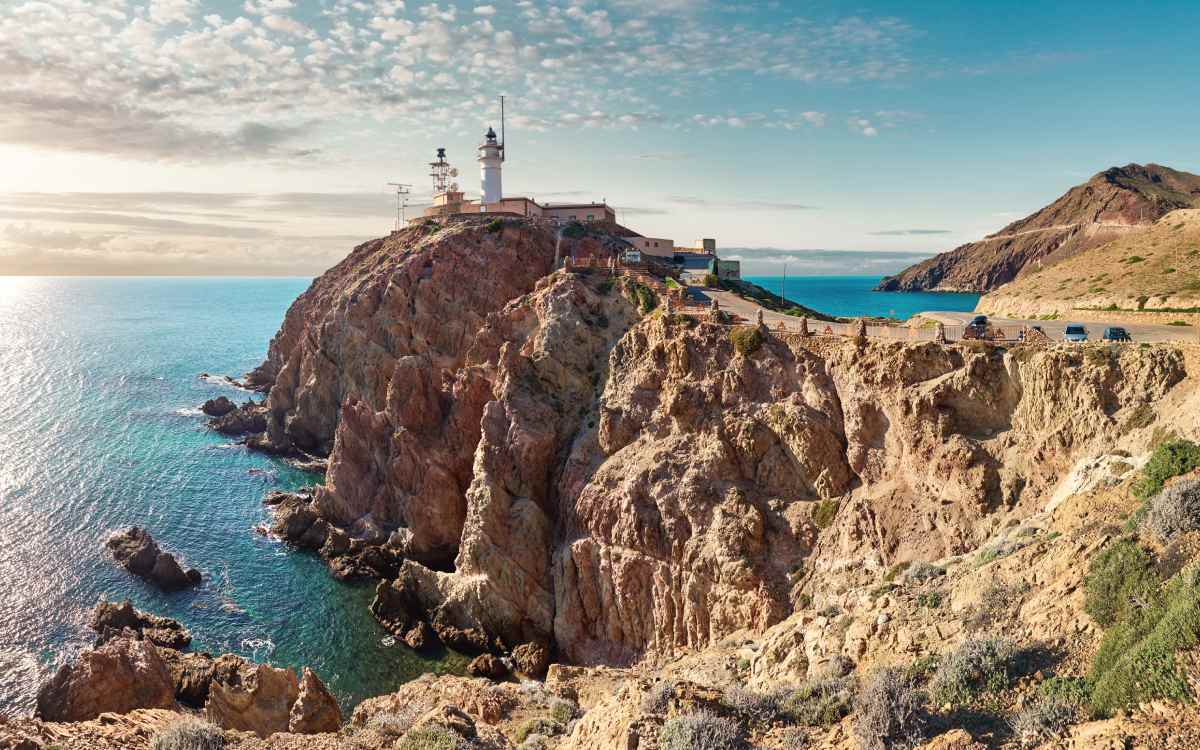
Lighthouse at the Cabo de Gata-Níjar Natural Park. | Shutterstock
Any itinerary of what to see in Almería must have at the top of its list one of the most captivating natural settings on the Mediterranean coast. Less than a half hour from the regional capital, one discovers a virgin land of volcanic cliffs rising from the sea, fossil dunes, salt flats, small lakes, and breathtaking beaches. In fact, some beaches, such as Los Muertos, Los Genoveses and Mónsul, are among Spain’s finest.
However, the Cabo de Gata-Níjar Natural Park has many other hidden charms. Diving enthusiasts will find in its crystal-clear waters one of the most biodiverse marine reserves in the Mediterranean. And those seeking tranquility will find it in such villages as Agua Amarga, La Isleta del Moro, Las Negras and Rodalquilar, where time seems to slow down.

Canales de Padules in Laujar de Andarax. | Shutterstock
It was here where the sultan Boabdil sought refuge after being expelled from Granada by the Catholic Monarchs. In Laujar de Andarax, one can visit the ruins of the Moorish citadel as well as the church of the Encarnación, also known as the cathedral of the Alpujarra. In fact, this village is a great starting point for visiting some of the most stunning villages that dot this region of Almería.
The walking trail Montaña del Sol runs through this terrain, a circular, 300 kilometre-long route divided into 19 legs along the Alpujarra region between Granada and Almería. For the less ambitious, there are more doable treks along the foothills of the Sierra Nevada mountain range. Among such trails is the Canales de Padules, considered a natural monument in itself. It is a short, easy route running through a narrow gorge sprinkled with waterfalls and natural pools.
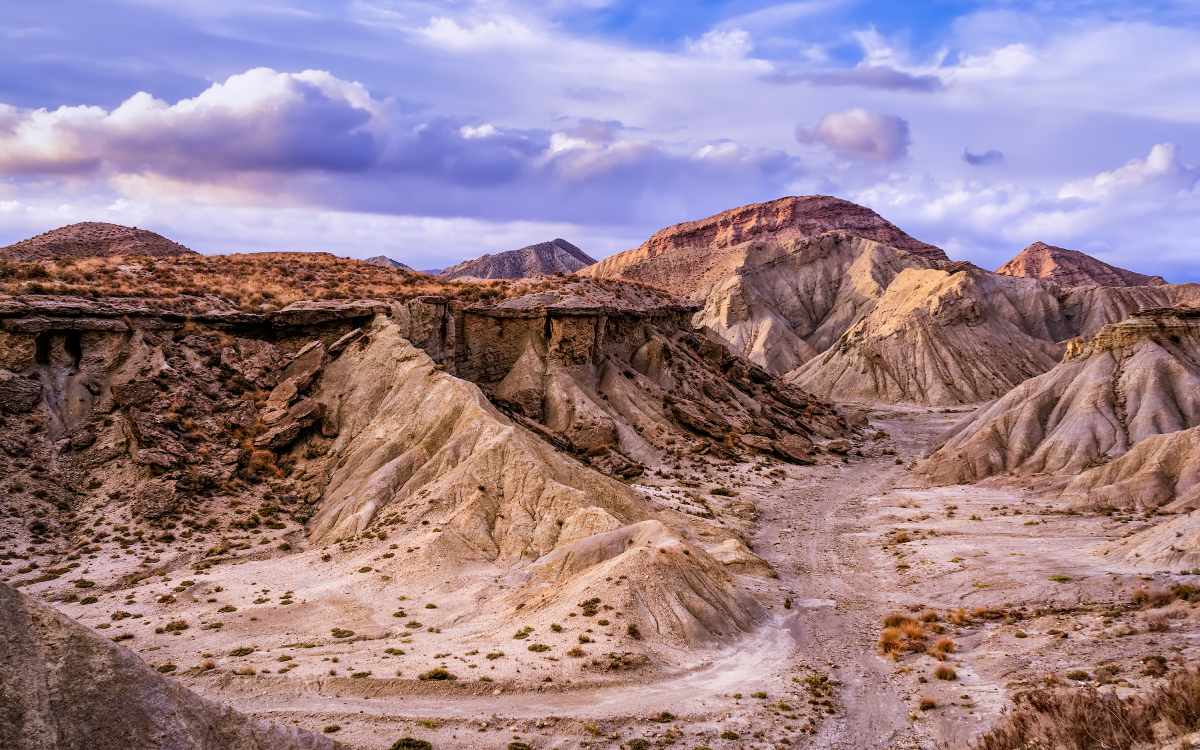
Otero ravine in the Tabernas desert, Almería. | Shutterstock
If there is a quintessential cinematic scene in Almería, it is the desert of Tabernas. It was here where countless movies from the 1970’s known as spaghetti westerns were filmed. Old, reconverted film sets and decor can still be visited today at theme parks. Setting foot here is akin to walking into the Old West, making it one if the most entertaining getaways in Almería for the entire family.
There are, however, many more reasons to visit the desert of Tabernas, which is just under 30 kilometres from Almería city. This area is the only desert in all of Europe, a natural landscape of unsettling beauty where a dramatic silence reigns. Nevertheless, it hides much more life than what appears at first glance, being home to numerous animal species and indigenous vegetation.

Mojácar. | Shutterstock
Between the sea and the mountain rises Mojácar, one of Almería’s most popular places and a must-see for anyone visiting the region. Its old quarter is a labyrinth of streets dotted with photogenic spots, such as the square of Las Flores, La Judería and the Casa de la Canana. And there is nothing like its beaches for taking a rest. With 17 kilometres of coastline, there are plenty of spots to choose from.
A getaway to Mojácar can be topped off by visiting the caves of Almanzora. It is one of the most unique spots in Almería, partly due to its 300 home-caves you will find in its surroundings. Its old quarter, however, reveals other attractions such as the Marqués de los Vélez Castle, today reconverted into a museum of contemporary art, and the church of Nuestra Señora de la Encarnación.
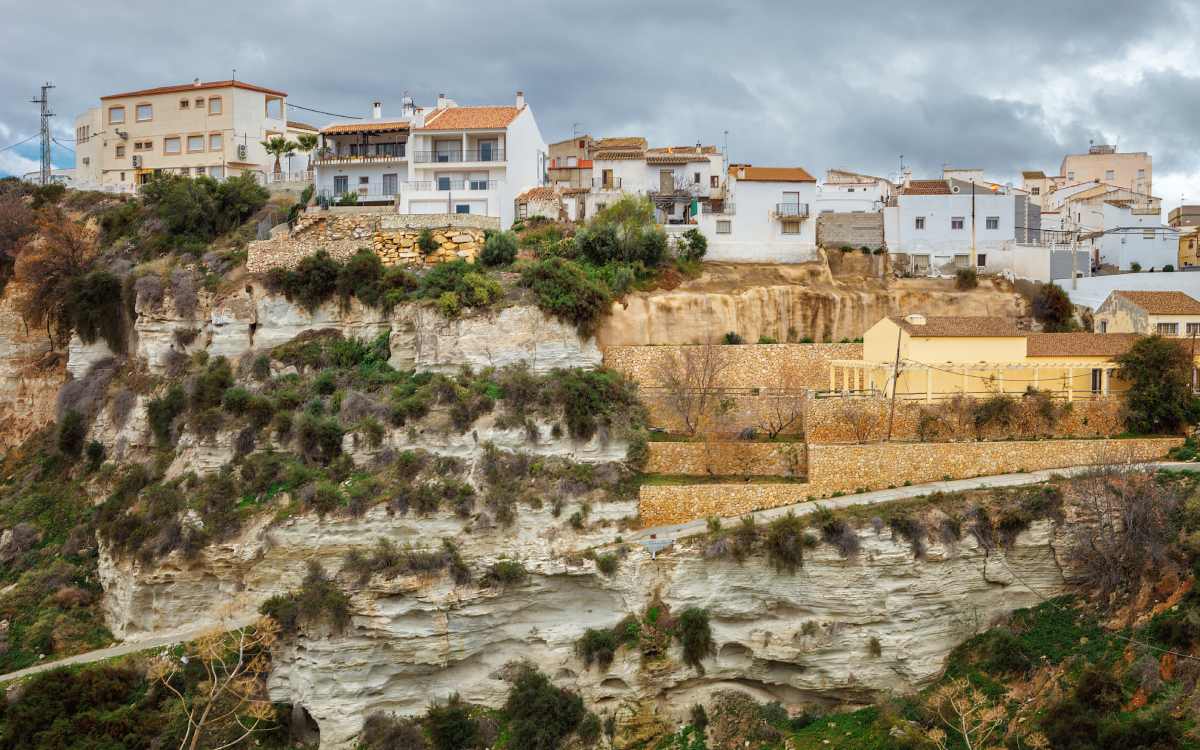
Sorbas. | Shutterstock
This is perhaps one of the most unexpected things to do in Almería. Astonishingly, the town of Sorbas sits on the edge of a cliff. Moreover, in the depths of this municipality, another extraordinary landscape awaits. It concerns one of the most significant gypsum karst formations on the planet, a geological treasure that hides Spain’s largest cave complex of gypsum. More than a thousand caves with transparent walls and formations carved out by water make up this magical place.
On the surface, a landscape in which mining still remains fundamental is revealed. In fact, this is the second open-air gypsum mine in the world. However, entering this underground world of passageways, chambers and startling rock formations will leave one speechless. An experience that can be enjoyed with children, though the more adventurous have the opportunity to explore potholing routes. And all of this just under an hour from Almería city.
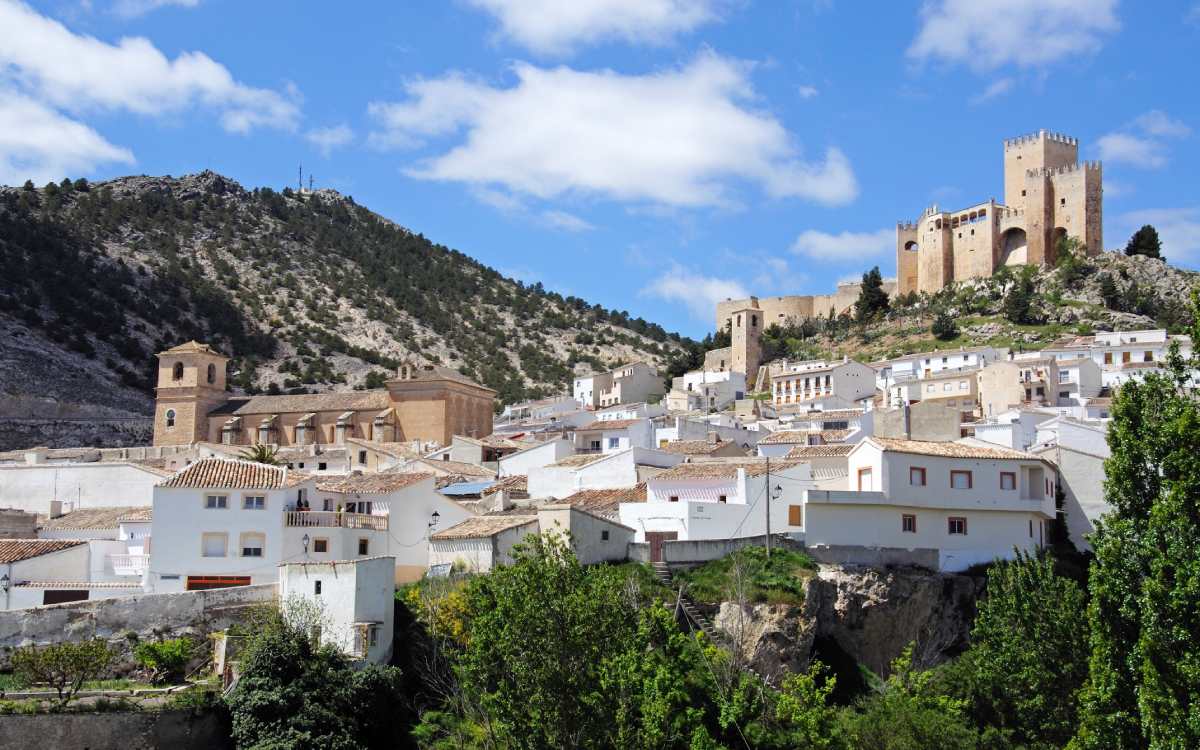
The castle at Vélez-Blanco. | Shutterstock
More than an hour and a half from Almería city, discovering one of the most breathtaking villages of the region is well-worth the trip. Its crowning glory is the Castillo de los Fajardo, a magnificent construction, a blend of Gothic and Renaissance styles, erected at the beginning of the 16th century. Regrettably, it is missing one of its most precious jewels, the Patio de Honor, a Renaissance masterpiece currently located at the Metropolitan Museum of Art in New York.
In addition to visiting the castle, one can walk its steep, narrow streets and discover the church of Santiago and the convent of San Luis. Not to be missed is Los Letreros cave, which contains one of the Levante’s most peculiar examples of cave art. As a matter of fact, it is here where the emblem of Almería, the Indalo symbol, can be found.
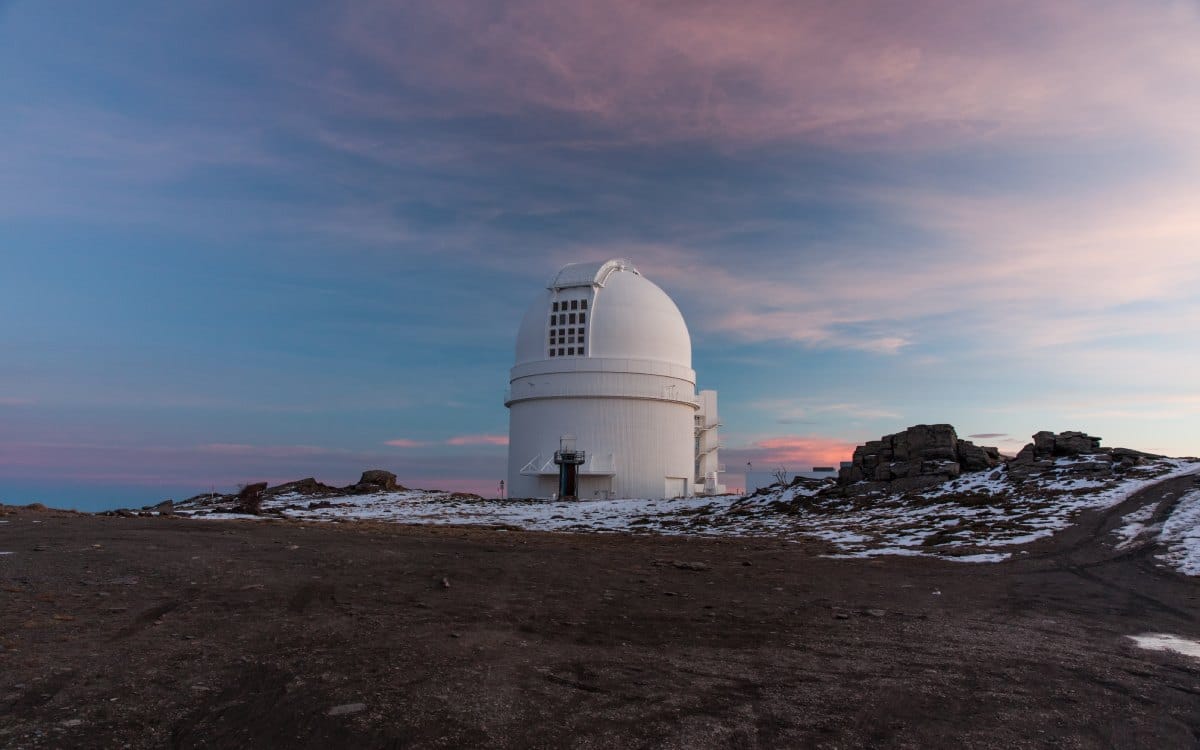
The Calar Alto Astronomical Observatory. | Shutterstock
With the desert of Tabernas nearly at its feet, the Filabres mountains conceal an endless number of interesting things to see including its nature, archaeological sites and some of Almería’s most charming villages. One such place is Macael, famous for the marble extracted from its terrain, which was used to construct the fountain of the Patio de los Leones at the Alhambra as well as the Renaissance-style courtyard of the castle at Vélez-Blanco.
Additionally, there is a place to admire the vastness of the night sky, the Calar Alto Astronomical Observatory, one of the largest in Europe. Located near Gérgal, the Calar Alto Observatory sits upon a plateau more than 2,100 metres high and is perfectly situated for enjoying astronomical viewing on a clear night. Obviously, it is one of the Starlight Destinations on the Iberian peninsula.
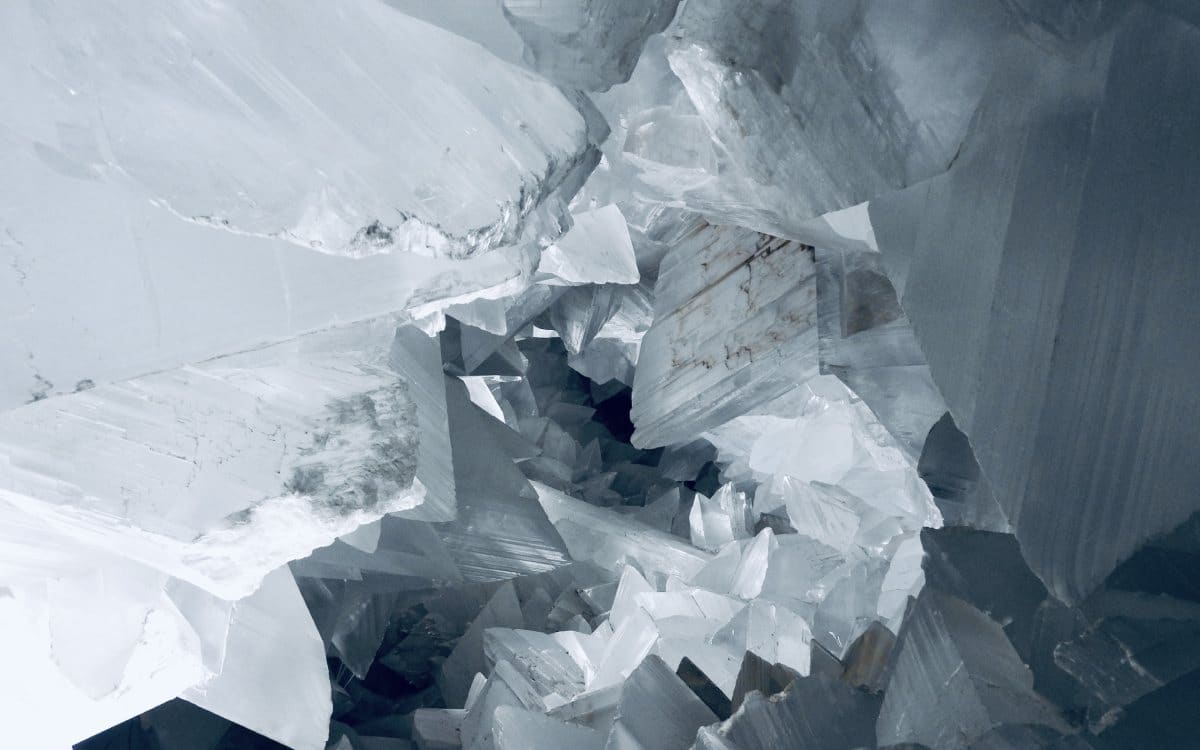
The Pulpí Geode. | Shutterstock
The province of Almería is a true paradise for geology enthusiasts. The array of what to see regarding this topic is astounding. However, if there is one truly magical site, it is the Pulpí Geode. But what is a geode? It is a hollow concretionary stone often lined with crystals of varying material. The Pulpí Geode is the second largest discovered in the world. Its walls are covered with transparent gypsum crystals that jut out in all directions, some of which reach a length of two metres.
The geode can be briefly seen from the hollow at the entrance. Additionally, the visit is complemented by a fascinating walking tour through the underground passages of the Mina Rica, a reminder of the impressive mining heritage of this area. Quite close to the region of Murcia, it is one of the most spectacular places to visit in Almería.